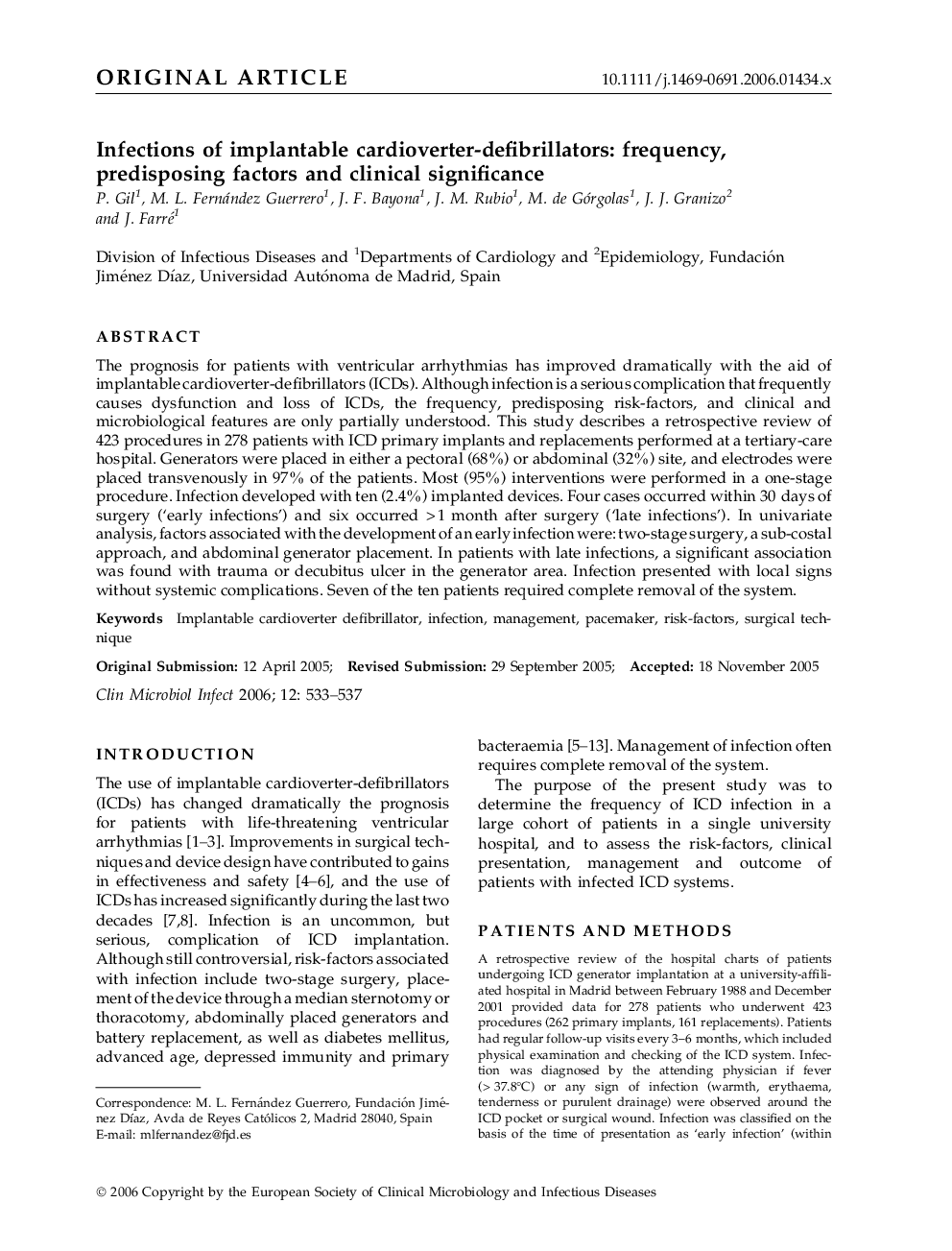| Article ID | Journal | Published Year | Pages | File Type |
|---|---|---|---|---|
| 3398601 | Clinical Microbiology and Infection | 2006 | 5 Pages |
ABSTRACTThe prognosis for patients with ventricular arrhythmias has improved dramatically with the aid of implantable cardioverter-defibrillators (ICDs). Although infection is a serious complication that frequently causes dysfunction and loss of ICDs, the frequency, predisposing risk-factors, and clinical and microbiological features are only partially understood. This study describes a retrospective review of 423 procedures in 278 patients with ICD primary implants and replacements performed at a tertiary-care hospital. Generators were placed in either a pectoral (68%) or abdominal (32%) site, and electrodes were placed transvenously in 97% of the patients. Most (95%) interventions were performed in a one-stage procedure. Infection developed with ten (2.4%) implanted devices. Four cases occurred within 30 days of surgery (‘early infections’) and six occurred > 1 month after surgery (‘late infections’). In univariate analysis, factors associated with the development of an early infection were: two-stage surgery, a sub-costal approach, and abdominal generator placement. In patients with late infections, a significant association was found with trauma or decubitus ulcer in the generator area. Infection presented with local signs without systemic complications. Seven of the ten patients required complete removal of the system.
